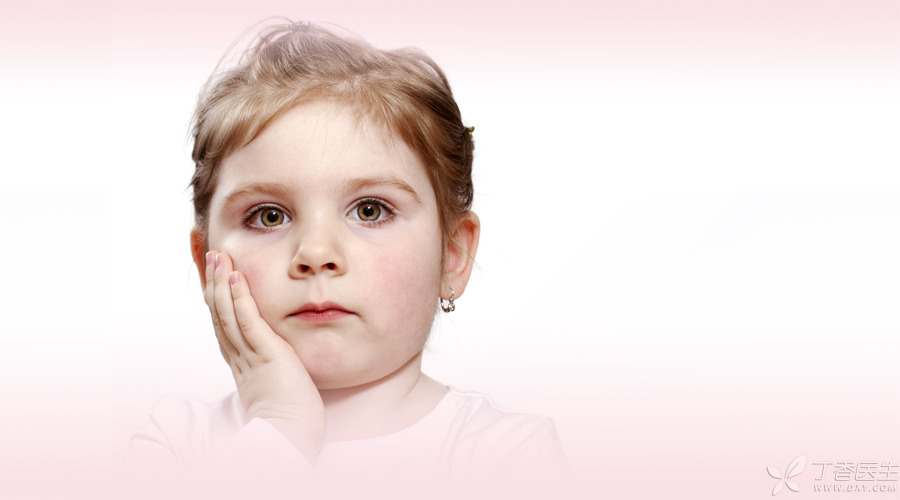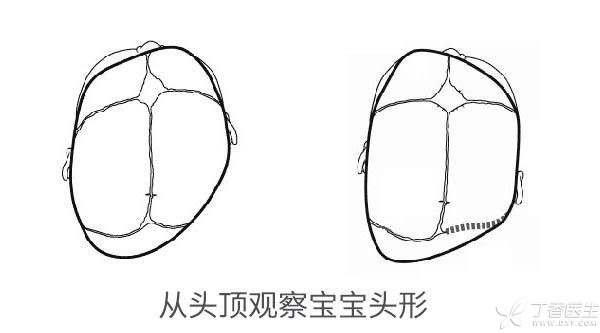
A friend nearby told me that her son’s head fell asleep. In order to correct it, she took two thick dictionaries to fix the child’s head in the middle every night, which she called “dictionary headband”. After unremitting efforts, the child’s head is finally normal now. As a mother, she is deeply gratified.
In fact, foreigners have similar problems. They use an upgraded version of [Dictionary Headband]-helmets that correct the head shape. Apart from bathing, babies have to wear them all day long.
The BBC reported that parents are very worried about their children’s head shape, so this small helmet is very popular even though it is worth 2,000 euros.
So, does the sleeping head need to be corrected? How to correct it properly? Why does the head deviate?
Is the corrective helmet really useful?
The issue is still controversial.
The American Academy of Pediatrics (AAP) pointed out that some very few serious cases can indeed use corrective helmets under the guidance of doctors.
However, a study published in the authoritative magazine < < British Medical Journal > > (BMJ) in 2014 believes that although helmets can improve parents’ anxiety, they will not change the natural improvement process of head shape, but may bring about skin allergy, bad smell, discomfort, inconvenience in holding children and other problems.
Simply put, the use of corrective helmets may only be [you think it is useful].
Head sleep is a common phenomenon.
The pursuit of head shape is the same both at home and abroad. Most parents hope that their babies can have a round and beautiful head shape. However, the reality has disappointed many mothers.
Head sleep deviation, which is medically called “postural skull deformity” (PSD), is a very common phenomenon.
About 45% of babies will have PSD; when they are 2 months old. If the minor children are included, three quarters of the children have PSD.
In this way, the children whose heads are not asleep are the few.
It turned out that the skull was elastic.
Before one year old, the baby’s skull suture was not fully fused, the skull was soft and elastic, and it was easy to deform under pressure.
For example, if the baby is used to sleeping on one side, the skull will be easily compressed and become parallelogram and other shapes.

Except for a few especially serious cases, the problems of irregular head and asymmetrical eyes and ears will occur. The influence of PSD on appearance only stops at the head shape, and the good news is that the problem can generally recover by itself.
Can the head grow round on its own?
The baby’s head shape is not good, which often makes parents doubt: will it be ugly when he grows up? Will it affect the development of the brain? If your head is flat, it is not convenient to turn your head. Will it be uncomfortable?
Scientists also want to know the answer, so they carry out scientific research. The following is the good news:
-
Head sleep does not affect brain development.
-
When you can sit for about six months, the baby’s head sleep will not worsen.
-
Not only that, the situation will naturally continue to improve. Usually, when you reach the age of school, the asymmetry of head shape cannot be seen from the appearance.
-
Head asymmetry basically does not last until puberty.
Therefore, please be patient and give time to the development of the skull. Most children’s head shape will improve by themselves.
Apart from waiting, can parents be what?
What doesn’t do it, when it is good, it always makes people uneasy. What if their children are carrying the kind of head that a few adolescents don’t grow round?
Dr. Clove compiled AAP and NHS recommendations for parents’ reference:
Step 1 Play on your stomach
When the baby wakes up, encourage him to play on his stomach under the supervision of his parents.
Babies can lie prone on the mat, can also lie prone on the legs and stomachs of parents. Playing on your stomach is not only helpful to the natural recovery of the head shape, but also can help the baby exercise the strength of the back, neck and arms, which is helpful for sports development.
Playing on your stomach and looking at the world from a different angle will help your baby to better understand the things around you and help him learn.
Step 2 Change the position of the head
When the baby is lying on the bed and leaning against the chair, he often changes the position of his head to avoid continuous pressure on a certain position of his head.
3. Encourage your baby to turn his head voluntarily.
The baby’s attention is easy to focus on bright places such as facing windows, or large color blocks with bright colors.
You can change the position of toys or posters in the room, let the baby sleep at both ends of the crib alternately, or change the position of the crib from time to time, which can encourage the baby to turn his head and look at different directions.
4. Hold the baby more
Don’t let the baby lie down all the time, hug him more.
Try to hug the baby in different ways, vertical hug, left and right hands change hug, lie down with your legs together and let the baby lie prone on your legs, etc. In short, it is good to ensure that the back of the baby’s head is not always under pressure.
If the above measures are ineffective, please visit your pediatrician. If torticollis or cranial suture is closed early, treatment should be carried out under the guidance of a doctor.
5. Don’t set the pillow! Don’t sleep on your stomach!
What needs to be reminded in particular is that our popular folk practice of setting pillows and sleeping on one’s stomach is not among the suggestions of authoritative organizations.
On the contrary, for safety reasons, AAP recommends that the baby sleep on his back, and does not recommend using any type pillow or other device to fix the baby’s sleeping position, because that may increase the risk of sudden infant death syndrome.
Therefore, to shape the baby’s beautiful and good head shape, it is good to hug and play on your stomach. Throw away all the what of the stereotyped pillow.
